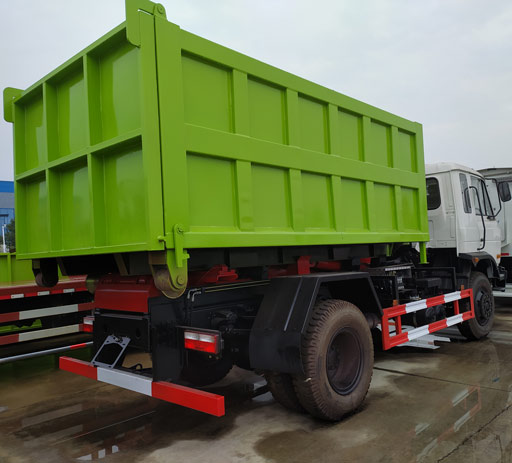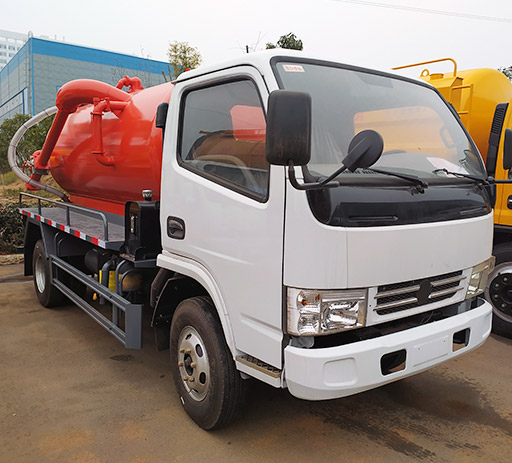Why Do Garbage Trucks Have Two Steering Wheels? Unveiling the Mystery
Garbage trucks are an essential part of our urban infrastructure, ensuring our communities remain clean and tidy. One of the most curious features of some garbage trucks is the presence of two steering wheels. This article delves into the reasons behind this unique design, exploring maneuverability, safety, and operational efficiencies. We will also address common questions about garbage trucks and shed light on how they function in our daily lives.
Understanding the Design of Garbage Trucks
The Basics of Garbage Truck Operation
Garbage trucks are specialized vehicles designed for collecting waste. Their capability to navigate tight spots and narrow streets is crucial, particularly in urban environments. Traditional garbage trucks typically have a single steering wheel at the front, providing a standard level of control. However, some models feature a second steering wheel, often located on the right side of the vehicle, which is pivotal for effective operation.
What Are Dual-Steering Garbage Trucks?
Dual-steering garbage trucks are equipped with steering wheels on both the left and right sides. These trucks are designed to maximize maneuverability in confined spaces, making them suitable for residential areas, downtown locations, and other challenging environments. By allowing the operator to steer from either side, waste collection becomes more efficient and less stressful.
The Advantages of Two Steering Wheels
Enhanced Maneuverability
One of the primary reasons garbage trucks have two steering wheels is to enhance maneuverability. In urban settings, tight corners, narrow streets, and parked cars pose challenges for traditional single-steering trucks. Dual-steering allows drivers to make sharp turns effortlessly and handle obstacles more adeptly.
Examples of Enhanced Maneuverability
| Situation | Benefit of Dual Steering |
|---|---|
| Narrow Streets | Easier navigation around parked cars |
| Residential Areas | Less need for multiple maneuvers when collecting waste |
| Turns at Intersections | Improved ability to complete sharp turns safely |
Improved Safety
Safety is paramount for garbage truck operators, especially when navigating busy streets. Dual steering allows for better visibility and control. The driver can steer from the passenger side when approaching from the opposite direction, reducing blind spots. This design helps prevent accidents and enhances the overall safety of both drivers and pedestrians.
Safety Features of Dual-Steering Garbage Trucks
- Reduced blind spots
- More control during challenging maneuvers
- Ability for the driver to quickly reposition themselves based on traffic conditions
Operational Efficiencies of Dual-Steering Trucks
Time Savings
Reducing the amount of time spent on each route is crucial for waste management companies. Dual-steering trucks can navigate efficiently, allowing drivers to collect waste more quickly and return to the main routes without delays. The design contributes to overall route efficiency, leading to fuel savings and decreased operational costs.
Worker Comfort and Accessibility

Traditionally, garbage truck operators spend long hours behind the wheel. The implementation of dual steering can provide additional comfort by allowing drivers to switch sides when necessary. This feature is particularly beneficial during long shifts, reducing fatigue associated with constant steering from one side.
The Mechanisms Behind Dual-Steering Systems

How Dual Steering Works
The dual steering mechanism in garbage trucks involves a connection between both steering wheels. When one wheel is turned, the other responds according to a predetermined steering ratio. Hydraulic systems are often employed to ensure the synchronized function of both steering wheels, which enhances control and responsiveness.
Key Components of Dual Steering Systems
- Steering column
- Hydraulic pumps
- Linkages connecting both steering wheels
- Control systems for coordination
Maintenance of Dual Steering Systems
Maintaining dual steering systems in garbage trucks is essential for optimal performance. Regular checks and balances must be performed, including:
- Inspection of hydraulic fluids and pressure
- Verification of all mechanical connections
- Regular lubrication and checks for wear and tear
Common Questions About Dual-Steering Garbage Trucks
Why Are Two Steering Wheels More Common in Certain Regions?
The prevalence of dual-steering garbage trucks can vary by region. Cities with denser populations and narrower streets often adopt this design to enhance waste collection efficiency. In contrast, rural areas may rely on traditional models due to more spacious roads and less traffic.
Are Dual-Steering Trucks More Expensive?
Generally, dual-steering garbage trucks can be more expensive initially due to their specialized design and the technology involved. However, the increased efficiency, safety, and potential for reduced operational costs may lead to long-term savings that justify the higher upfront expense.
Environmental Implications of Efficient Waste Collection
Reducing Carbon Footprint
Efficient waste collection systems result in fewer routes, leading to lower fuel consumption. Dual-steering garbage trucks contribute to this efficiency, helping cities reduce their carbon footprints. The use of such advanced vehicles aligns with global efforts to promote environmental sustainability.
Encouraging Recycling and Waste Reduction Initiatives
Your local waste management authority may utilize dual-steering trucks to improve accessibility for recycling programs. Convenient collection can encourage greater public participation, ultimately contributing to lower landfill rates and promoting sustainability.
Practical Tips for Garbage Truck Drivers
Tips for Navigating with a Dual-Steering Truck
- Familiarize yourself with the truck’s dimensions and turning radius.
- Practice steering from both sides to develop comfort with the system.
- Always check mirrors and blind spots, even with enhanced visibility.
Strategies for Safety on the Job
- Establish a routine for pre-trip inspections.
- Stay aware of your surroundings, especially in busy areas.
- Use designated collection routes and follow traffic regulations closely.
Future of Garbage Truck Technology
Technological Advancements
The future of garbage trucks includes advancements in technology that could enhance control systems further. Innovations such as autonomous steering systems and improved hydraulic mechanisms can improve the functionality of dual-steering trucks, making waste collection even more efficient.
Impact of Electromobility
As the push for electric vehicles increases, we can expect to see electric versions of dual-steering garbage trucks, further contributing to sustainability goals. These vehicles will not only reduce emissions but may also include advanced technology for better navigation and tracking.
Frequently Asked Questions (FAQs)
1. Why do some garbage trucks not have dual steering?
Some garbage trucks are designed for larger, open areas where tight maneuvers aren’t necessary. Single-steering trucks suffice in these environments, where their simpler design is cost-effective and efficient.
2. Is dual steering common in other types of trucks?
While dual steering is primarily seen in garbage trucks, it can also be found in some specialized vehicles, such as delivery trucks and construction vehicles that require high maneuverability in tight spaces.
3. Do dual-steering trucks require specialized driver training?
While not mandatory, specialized training can significantly enhance a driver’s efficiency and safety. Understanding how to operate a dual-steering system can reduce risks and boost operational performance.
4. How often should dual-steering systems be serviced?
Regular maintenance checks are crucial, ideally at least semi-annually, to ensure the hydraulic and mechanical systems are functioning optimally. Attention to any wear and tear also helps prolong the vehicle’s lifespan.
5. Can dual-steering technology be retrofitted to older trucks?

Retrofitting older garbage trucks with dual-steering technology may be possible but can be costly and complex. It often depends on the existing vehicle’s design and mechanical compatibility.
6. Are there noticeable differences in fuel efficiency between dual and single steering trucks?
While there may not be immediate differences in fuel efficiency between dual and single steering trucks, the operational efficiencies gained from minimizing travel times and routes can lead to fuel savings in dual-steering trucks over time.
